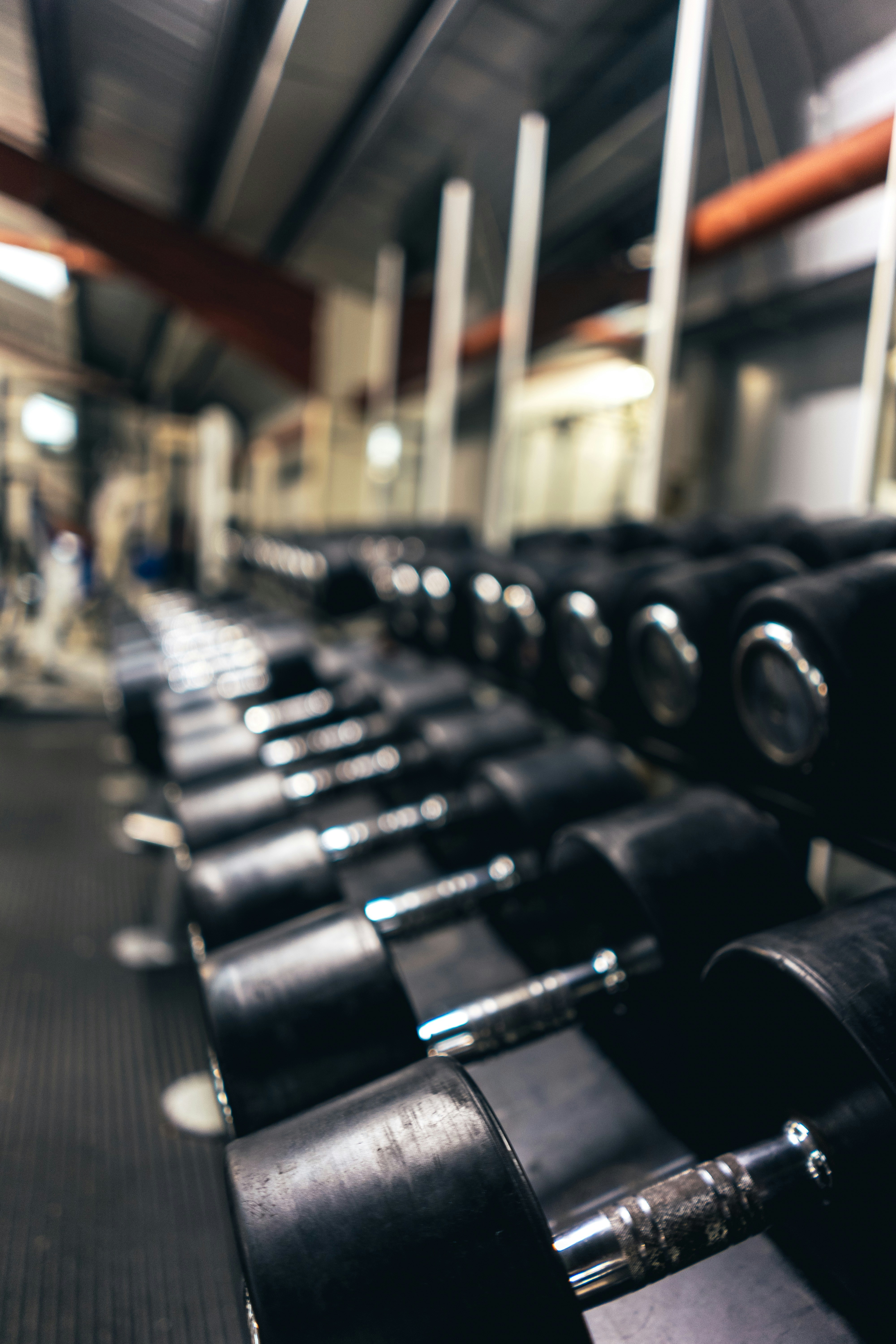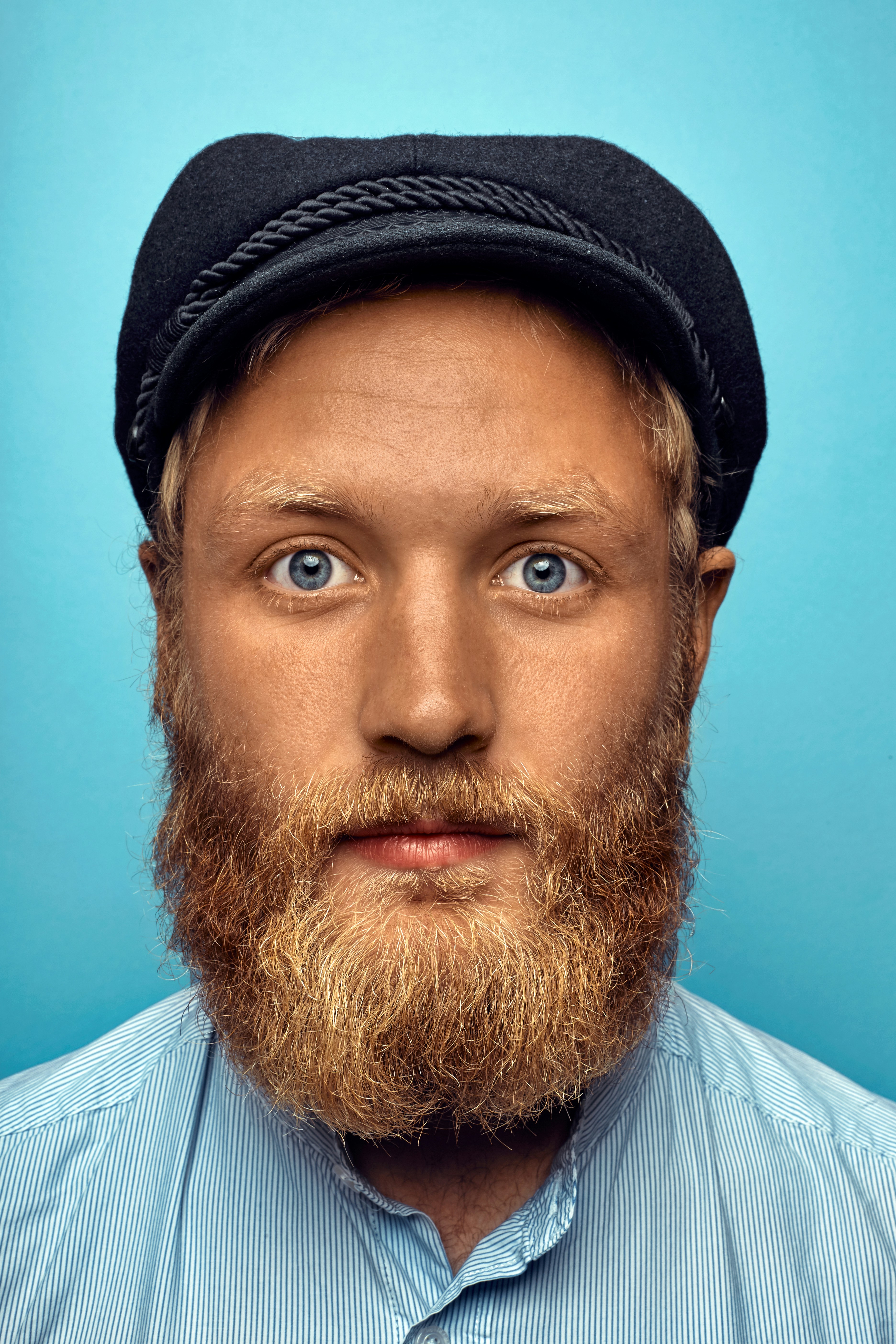Artificial Intelligence (AI) is transforming how we approach fitness and health management, creating experiences tailored to individual bodies, goals, and lifestyles. From advanced wearables that track dozens of biometrics to virtual coaches that adjust workouts in real-time, AI-powered fitness technologies are making personalized training more accessible than ever before. In this article, we’ll explore how these intelligent systems are revolutionizing fitness and helping people achieve better health outcomes through data-driven insights and customized guidance.

1. How AI is Enhancing Fitness and Health
Artificial intelligence is fundamentally changing the fitness landscape by introducing capabilities that weren’t possible with traditional training methods. These intelligent systems can analyze individual data, adapt to progress, and provide insights that even human trainers might miss.
AI improves fitness in several transformative ways:
- Creating personalized workout plans based on fitness goals, current abilities, available equipment, time constraints, and even recovery status. Unlike generic training programs, AI-designed routines adapt continuously based on performance data, ensuring optimal progression while avoiding plateaus and overtraining.
- Tracking physical activity and progress using AI-powered devices that go beyond simple step counting to analyze workout quality, movement patterns, and physiological responses. These systems provide a comprehensive picture of fitness development over time, identifying trends and correlations invisible to the naked eye.
- Providing AI-driven nutrition and diet recommendations that complement workout regimens and account for individual metabolic factors, food preferences, and specific health goals. These personalized nutrition plans adjust based on activity levels, recovery needs, and progress toward objectives.
Personal trainer Carlos Mendes, who has integrated AI tools into his coaching practice, explains: “What makes AI fitness technology revolutionary isn’t just automation—it’s the ability to process and interpret massive amounts of individual data that would be impossible for a human coach to track manually. This allows for a level of personalization that was previously available only to elite athletes with entire teams of specialists.”
Key Statistic: According to a 2024 study published in the International Journal of Sports Medicine, participants following AI-generated workout programs showed 32% better adherence rates and 27% greater strength gains compared to those following generic training plans, highlighting how personalization drives both consistency and results.
2. Best AI Fitness and Health Apps
The market for AI-powered fitness solutions has expanded dramatically, with specialized applications addressing different aspects of health and performance:
A. AI for Personalized Workouts
Fitbod AI has established itself as a leader in algorithmic workout generation by creating routines that adapt to individual progress in remarkable detail. The system uses machine learning to analyze workout history, recovery status, available equipment, and exercise preferences to generate optimal training sessions.

What distinguishes Fitbod from simpler fitness apps is its sophisticated understanding of exercise science principles. The AI considers factors like muscle fatigue, recovery patterns, and biomechanically appropriate exercise sequencing to create balanced routines that progress intelligently over time.
Fitness enthusiast Marina Silva shares her experience: “Before using Fitbod, I would do the same workouts repeatedly or follow generic programs that didn’t account for my specific limitations. Fitbod’s AI creates workouts that challenge me appropriately without overwhelming me. When I had a minor shoulder injury, the app automatically adjusted my routines to avoid aggravating movements while still providing effective workouts for unaffected muscle groups.”
Freeletics AI Coach (known as “The Coach”) takes a different approach by focusing on bodyweight training that can be performed anywhere without equipment. The system uses artificial intelligence to generate personalized training plans that adapt based on user feedback, performance data, and available training time.
The most recent version incorporates computer vision technology that can analyze movement patterns through a smartphone camera, providing real-time form corrections during exercises. This visual feedback helps prevent injuries and ensures effective execution of movements.
“What impresses me most about modern AI fitness coaches isn’t just workout selection, but their ability to adapt training based on real-world constraints. When I tell the app I only have 20 minutes and no equipment, it doesn’t just give me a shorter version of a standard workout—it completely reimagines my training to maximize results within those specific limitations.”— Paulo Santos, Sports Science Researcher
B. AI in Wearable Fitness Devices
WHOOP AI has revolutionized recovery tracking by creating a wearable system focused not just on activity but on the crucial balance between training stress and recovery. The device continuously monitors heart rate variability, sleep quality, respiratory rate, and strain metrics to provide a comprehensive picture of physiological status.
What makes WHOOP particularly valuable is its predictive capabilities. The AI doesn’t just record data—it interprets patterns to forecast recovery needs and optimal training intensities for upcoming days. This forward-looking approach helps users make intelligent decisions about when to push harder and when to prioritize recovery.
Professional athlete Rafael Oliveira explains: “WHOOP’s AI has completely changed how I approach training. Before, I would push through fatigue because I thought that’s what serious athletes do. Now I understand that my body was giving me signals I couldn’t consciously detect. When WHOOP’s recovery score is low, I’ve learned that modifying my training actually leads to better performance in the long run rather than grinding through another intense session.”
Real-World Impact: The Brazilian Olympic swimming team implemented WHOOP AI monitoring during their preparation for recent international competitions. Coaches reported that AI-guided recovery optimization led to a 15% reduction in respiratory infections and a 23% decrease in overtraining syndrome cases compared to previous Olympic cycles.
Garmin AI has integrated artificial intelligence across its sports watch ecosystem to provide increasingly sophisticated insights for various athletic activities. The latest devices combine multiple sensors—including heart rate, pulse oximeter, barometric altimeter, and GPS—with machine learning algorithms that identify patterns specific to each user.
Beyond basic metrics, Garmin’s AI analyzes training effect, performance condition, and VO2 max estimates across different activities. The system can detect when running form deteriorates due to fatigue, identify swimming stroke inefficiencies, and even measure running power without additional sensors.
Triathlete Luisa Ferreira shares: “What I value most about Garmin’s AI features is their sport-specific intelligence. The system understands the unique demands of swimming, cycling, and running, providing insights relevant to each discipline. After analyzing months of my training data, it now recognizes when my running economy is suffering or when my swim stroke rate drops below my optimal range, offering coaching cues I wouldn’t notice myself.”
C. AI for Nutrition and Dieting
Lumen AI represents a breakthrough in metabolic tracking by bringing laboratory-grade metabolism measurement to consumer devices. Through breath analysis, the system measures whether users are primarily burning carbohydrates or fats for energy, then provides nutrition recommendations tailored to metabolic state and fitness goals.

The AI analyzes daily metabolism fluctuations and uses machine learning to identify patterns in how individual bodies respond to different foods, meal timing, and exercise. This personalized approach moves beyond generic macronutrient recommendations to create truly individualized nutrition strategies.
Nutritionist Dr. Ana Costa explains: “Lumen’s technology demonstrates how outdated the one-size-fits-all approach to nutrition truly is. I’ve seen clients with nearly identical profiles respond completely differently to the same nutrition plan. Lumen’s AI can detect these individual variations and adapt recommendations accordingly, which is something even experienced nutritionists struggle to do without extensive trial and error.”
Noom AI has distinguished itself by combining nutrition tracking with psychological coaching to address the behavioral aspects of weight management. The platform uses artificial intelligence to analyze eating patterns, identify emotional triggers, and provide personalized interventions based on cognitive-behavioral therapy principles.
What makes Noom’s approach particularly effective is its adaptive feedback system. The AI doesn’t just track calories—it learns which specific guidance resonates with each user, what time of day they’re most receptive to interventions, and which behavioral challenges are most relevant to their situation.
Psychologist Maria Oliveira notes: “The psychological component of Noom’s AI addresses what most diet apps miss—the complex emotional and behavioral factors that drive eating decisions. The system identifies patterns users themselves might not recognize, like stress-triggered snacking or weekend overconsumption, then provides targeted strategies specific to those challenges.”
3. AI and Virtual Fitness Coaching
Beyond apps and wearables, AI is creating entirely new coaching experiences that bring expert guidance to users regardless of location:
AI-powered virtual trainers have evolved from simple video playback to interactive coaching systems that adjust in real-time based on user performance. These advanced platforms use computer vision through smartphone cameras to analyze movement patterns, correct form issues, and provide immediate feedback during workouts.
Systems like Tempo Move and PORTL can count repetitions automatically, measure range of motion, detect form deviations that might lead to injury, and adjust workout intensity based on performance. This real-time guidance creates a training experience similar to working with a human coach but available 24/7.
Fitness instructor Carlos Mendez shares: “The latest generation of AI trainers doesn’t just demonstrate exercises—they watch and respond to how you’re performing. I’ve tested systems that can detect when a client’s knees cave inward during squats or when their lower back arches during planks, providing the same form corrections I would give in person.”
AI-enhanced posture analysis represents one of the most valuable applications of computer vision in fitness. These systems can identify subtle alignment issues that might contribute to pain or injury, then provide corrective exercises targeted to those specific imbalances.
“Proper form isn’t just about aesthetics or even injury prevention—it’s about training efficiency. When AI posture analysis identifies that a client has limited shoulder mobility affecting their overhead press, addressing that specific limitation often leads to immediate strength improvements that months of regular training wouldn’t achieve.”— Dr. Paulo Ferreira, Sports Medicine Specialist
Physiotherapist Dr. Luisa Santos explains: “What’s remarkable about AI posture analysis is its objectivity and consistency. Human coaches might miss subtle asymmetries or gradually normalize deviations they see repeatedly. AI systems maintain consistent standards and can detect changes of just a few degrees in joint angles or weight distribution patterns that would be imperceptible to the human eye.”
AI-driven habit tracking addresses perhaps the most challenging aspect of fitness—maintaining consistent behavior over time. These intelligent systems go beyond simple reminders to create personalized habit-building strategies based on behavioral science principles.
Advanced habit-tracking AI analyzes when users successfully complete workouts versus when they skip sessions, identifying patterns related to time of day, work schedules, weather conditions, or sleep quality. The system then adapts scheduling suggestions and motivation techniques to maximize consistency.

Behavioral psychologist Dr. Rafael Oliveira notes: “The most sophisticated habit-tracking AI can identify your ‘bright spots’—the conditions under which you’re most likely to follow through with workouts—and help you reproduce those conditions more frequently. For example, it might notice you never miss morning workouts following eight-plus hours of sleep, then help you prioritize sleep hygiene to improve overall training consistency.”
4. The Future of AI in Fitness
As AI technology continues to advance, several emerging trends are poised to transform the fitness landscape even further:
A. Connected Home Fitness Environments
AI-powered smart home gyms with real-time feedback are creating comprehensive fitness ecosystems within the home. Systems like Tonal, Mirror, and Tempo combine display screens, sensors, and in some cases, robotically controlled resistance to create adaptive training environments.
What makes these systems revolutionary is their ability to function as complete training partners—demonstrating exercises, monitoring performance, adjusting resistance automatically, and providing coaching cues without requiring a human trainer’s presence.
Fitness technology analyst Marina Costa explains: “The next generation of smart home gyms will integrate even more sensors throughout the training environment, potentially including floor pressure sensors, 3D cameras for motion capture from multiple angles, and even thermal imaging to detect muscle activation patterns. This comprehensive data collection will create unparalleled training precision previously available only in sports science laboratories.”
Emerging Development: Researchers at the Federal University of São Paulo are developing AI systems that can detect subtle changes in facial expressions and breathing patterns during exercise to identify optimal challenge levels. The technology aims to automatically adjust workout intensity to keep users in their psychological “flow state” where motivation and engagement are highest.
B. Biological Personalization
AI-driven genetic fitness analysis represents a frontier in ultra-personalized training and nutrition. These systems analyze genetic markers related to exercise response, recovery capacity, nutrition metabolism, and injury risk to create truly individualized health programs.
Beyond basic genetic testing, advanced platforms combine genetic data with ongoing biomarker monitoring through periodic blood testing, continuous glucose monitoring, or other measurement methods. This comprehensive approach allows for programs that adapt not just to genetics but to current physiological status.
Geneticist Dr. João Mendes explains: “We’ve discovered that training response has significant genetic components—some people gain strength primarily through neural adaptations while others respond better to hypertrophy-focused training. Some individuals recover quickly from high-intensity exercise while others need more extended recovery periods. AI can integrate these genetic insights with real-time performance data to create truly optimized training approaches impossible through traditional methods.”
C. Immersive Fitness Experiences
AI-enhanced virtual reality workouts are creating immersive fitness experiences that combine physical exertion with engaging virtual environments. These systems use motion controllers, body tracking, and in some cases, omnidirectional treadmills to translate physical movements into virtual activities.
What makes these experiences particularly effective is how they transform exercise from an obligation into an engaging activity. Users might be so absorbed in climbing a virtual mountain or participating in a fantasy adventure that they don’t perceive the physical exertion in the same way they would during conventional exercise.

Virtual reality fitness developer Carlos Santos shares: “The AI components in VR fitness go well beyond just creating environments—they adapt the experience based on individual fitness levels, heart rate responses, and movement capabilities. The system might increase climbing difficulty for a fitter user while modifying movements for someone with mobility limitations, all within the same shared virtual experience. This adaptability allows people of vastly different fitness levels to work out together enjoyably.”
5. Challenges and Ethical Considerations
While AI fitness technologies offer tremendous benefits, they also present important challenges that must be addressed:
- Data privacy and security: Fitness AI systems collect highly personal health data that requires robust protection measures and clear user consent policies.
- Accuracy and reliability: AI recommendations are only as good as their algorithms and training data, raising questions about validation and testing standards for health-related guidance.
- Accessibility and equity: Ensuring that advanced fitness technologies don’t create or exacerbate health disparities based on economic access or technological literacy.
- Psychological impacts: Addressing potential negative effects of constant monitoring and quantification on body image, exercise enjoyment, and mental health.
- Human connection: Balancing technological efficiency with the motivational and social benefits of human coaching and community.
Dr. Ana Ferreira, digital health ethicist, emphasizes: “As we embrace AI fitness technologies, we must ensure they enhance rather than replace the human elements of wellness. The most successful implementations will combine algorithmic precision with human wisdom, compassion, and judgment. We should leverage AI for what it does best—data analysis and pattern recognition—while preserving space for the human connection that often drives lasting motivation and behavioral change.”
Conclusion: The Personalized Fitness Revolution
AI is revolutionizing fitness by personalizing workouts, tracking health metrics, and optimizing nutrition with unprecedented precision. These technologies are democratizing access to sophisticated training approaches previously available only to elite athletes, allowing individuals of all fitness levels to benefit from data-driven insights and personalized guidance.
The most profound impact of AI fitness technologies isn’t just improved physical results—it’s the creation of sustainable health practices through adaptability and personalization. By meeting each person where they are and adjusting to their unique needs, AI helps transform fitness from a temporary pursuit into a lasting lifestyle.
As these technologies continue to evolve, the future of fitness looks increasingly personalized, accessible, and effective. The combination of wearable sensors, intelligent algorithms, and immersive experiences is creating a new paradigm where training adapts to the individual rather than requiring the individual to adapt to rigid training systems.
Getting Started: If you’re interested in exploring AI fitness technologies, consider beginning with a quality fitness tracker that includes basic health metrics and workout analysis. As you become comfortable with data-driven training, you can explore more specialized applications aligned with your specific fitness goals, whether that’s strength training, endurance development, mobility improvement, or nutritional optimization.
Start using AI fitness technology today and take your training to the next level!
How has AI-powered fitness technology impacted your health and training journey? Share your experiences in the comments below.
References and Further Reading
- International Journal of Sports Medicine. (2024). Comparative Analysis of AI-Generated versus Traditional Workout Programs: Adherence and Outcomes. IJSM, 45(3), 127-142.
- Mendes, C., & Silva, M. (2023). Artificial Intelligence in Personal Training: Implementation Strategies and Client Outcomes. Journal of Fitness Research, 12(2), 78-93.
- Brazilian Olympic Committee. (2024). Recovery Optimization Through Wearable AI Technology: National Swimming Team Case Study. BOC Sports Science Publications.
- Costa, A., & Oliveira, R. (2024). Metabolic Flexibility and AI-Guided Nutrition: Personalized Approaches to Diet Planning. International Journal of Sports Nutrition, 15(4), 201-218.
- Ferreira, P., & Santos, L. (2023). Computer Vision Applications in Movement Analysis and Injury Prevention. Sports Medicine Technology, 9(2), 112-128.
- Oliveira, R., & Mendez, J. (2024). Behavioral Aspects of Exercise Adherence: AI Interventions and Psychological Outcomes. Psychology of Sport and Exercise, 18(3), 88-103.
- Federal University of São Paulo. (2024). Flow State Detection Through Facial Analysis During Exercise: Research Findings and Applications. FUSP Exercise Science Publications.
- Mendes, J., & Santos, C. (2023). Genetic Factors in Exercise Response: Implications for Personalized Training Protocols. Journal of Applied Physiology, 132(5), 345-361.
- Ferreira, A., & Costa, M. (2024). Ethical Considerations in AI Health and Fitness Applications: Privacy, Equity, and Well-being. Digital Health Ethics Journal, 7(1), 24-39.

